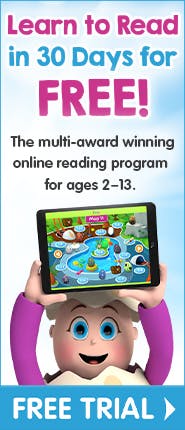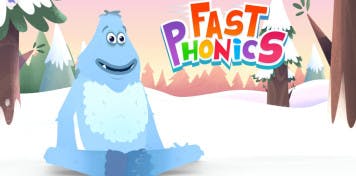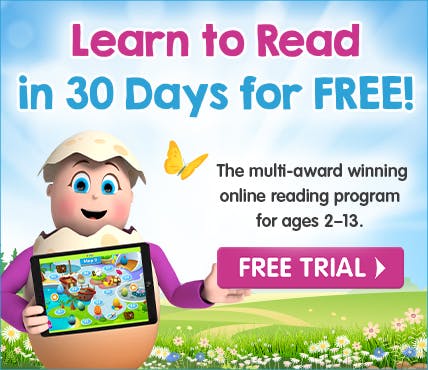


Top 12 Phonics Activities for Kids
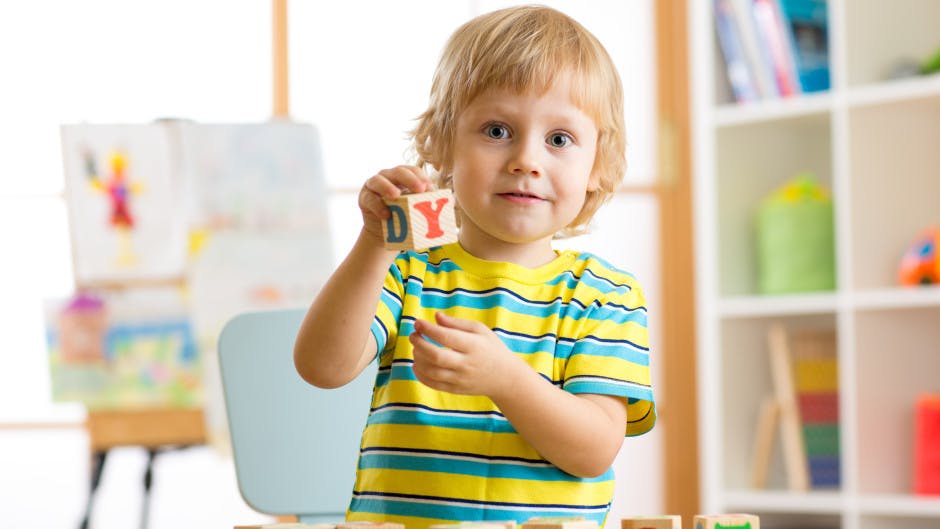
Learning phonics doesn't have to be hard. Try these fun phonics activities at home and use online phonics programs like Reading Eggs. Free trial
One of the key components of learning how to read is understanding phonics, that is, how written spellings represent the sounds of spoken words. But how do you teach phonics activities?
3 must-do practices for teaching phonics (that kids love!)
Play
Children learn through play, so try incorporating phonics activities at home that involve playing. Make sure that whatever activity you choose you are intentional with your language, as this will help to develop their language skills.
For example, be descriptive about the things your child is playing with. You might say “the red playdough is squishy”, or “the blocks tumble down to the ground”. You can also focus on what your child is doing and report back i.e., “You are pushing the blue train along the track”. Alternatively, you can just talk your child through what you're doing as well, “I'm drawing a purple butterfly with green polka dots”.
Sing
Activities that involve singing are also a wonderful way to develop your child's language ability. Anytime that you mix words, meter and music together, you end up with an incredibly powerful learning tool. Words alone are powerful, but add rhythm, meter and melody, and you have something that can really burrow into their mind.
Read
And of course, an often overlooked phonics activity is simply reading with your child. Children pick up a lot just by listening to a parent or caregiver read, paying attention to your pronunciation, your tone and even the cadence of reading and the emphasis you place on particular words. After all, the main goal for any phonics activity is to get your child to read real books, so it's important to stress that books are a fun activity for them to participate in.
For more tips on how to make reading more fun for your child, check out this article.
Learn with hundreds of fun phonics activities (for FREE!)
Make sure your child understands phonics with hundreds of engaging, expert-designed phonics activities. Kids need to learn all the phonics skills such as letter sound relationships and the best way to teach them is by making it fun! Our multi-award winning program covers everything they need to know to become strong, confident readers.
So, now that you have the building blocks for any phonics activity (remember: play, sing, read!), let's take a look at some specific phonics activities you can try out with your child at home!
Teach your child phonics with these fun, effective phonics activities
1. Flip the Pancake
Perfect for ages 3–5
If your little one loves pancakes then they're sure to love this phonics activity! Using brown construction paper, cut out 8–10 circles and write out the letters your child is working on in class (or choose some of your own). Grab a spatula and have your child flip over each pancake and say the letter name on the back.
2. Play Dough Letters
Perfect for ages 3–5
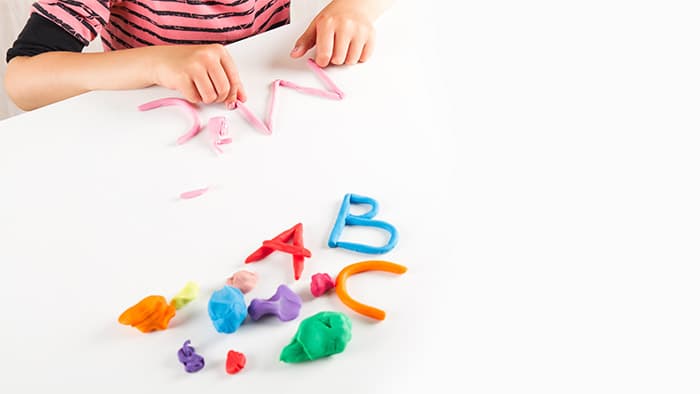
Try hundreds of fun phonics activities for kids with Reading Eggs! Free trial
This is a great hands‑on activity for kinaesthetic learners. Using play dough, call out different letters of the alphabet and watch your child construct the letters. For a visual aid, place a flashcard of the letter they're trying to create in front of them.
3. Word Roller
Perfect for ages 4–6
You'll need a ball and a set of alphabet flashcards for this activity. Flip over a flashcard and roll the ball to your child. Your child then has to name a word that begins with that sound. They can then roll the ball back to you or another parent/sibling who has to say another word that starts with that same letter. Do this a few times with one letter before switching to the next. This activity can also be done outdoors if you like!
4. Magazine/Newspaper Scavenger Hunt
Perfect for ages 4–6

Looking for more phonics activities to try at home? Try out hundreds of phonics activities with Reading Eggs! Free trial
Gather up any old newspapers and magazines you may have and ask your child to search for images that begin with the letter sound you've called out. If your kids love scavenger hunts, check out this fun alphabet scavenger hunt as well.
5. Popsicle Stick Questions
Perfect for ages 7–10
This is a great activity for older kids to try after they've finished reading a book or several chapters of a story. Using popsicle sticks, write down one general comprehension question per stick such as, “Where does the story take place? Who is telling the story? What happened in the story?” Place the sticks in a cup and allow your child to take a few sticks out and answer the questions verbally or write them out on a piece of paper.
Read our article for more information on how to improve your child's reading comprehension.
6. Letter Swat
Perfect for ages 3–5
Start off by choosing a list of anywhere between 6–9 letters you'd like your child to work on. Write them on sticky notes and spread them out on the table or floor and then say the letter sound. Using a fly swatter, it's your child's job to swat the letter that matches each sound. This can easily be played with two or more children – make it a race to see who can swat the letter first!
7. Word Walk
Perfect for ages 4–6

Kids love interactive activities. Try hundreds of online interactive phonics games with Reading Eggs. Free trial
This phonics activity is great for high energy kids who like to keep moving, plus it's a cinch to set‑up. Just grab a piece of chalk and write down some simple words on the pavement (use your child's word list from school if you have one), then have your child walk along each word, sounding them out as they go. Easy!
For more outdoor literacy games, check out Outdoor Literacy Games Your Kids Will Love.
8. Letter Pong
Perfect for ages 5–7
For this fun phonics activity you'll need some plastic cups and a few ping pong balls. Start by labelling the cups with different letter blends (also called consonant blends) that your child is currently working on such as bl, br, cr, sn or st. Arrange the cups into a triangle shape let your little one toss the ball into a cup. Each time they get the ball into the cup they need to say a word that uses that particular letter blend. For example bl could be blue or black, whereas br could be break or brown. Try and see how many words they can come up with for each one.
9. Flip the Top
Perfect for ages 5–7
Using the lids of baby wipe packages, you can easily create a fun spin on a classic flashcard game. Simply glue the flip top lids to a piece of cardboard paper and place a different sticker on each lid. Under the lid, write the first letter of each sticker. Your child can then guess the first letter of each sticker by sounding out the word and then flip the lid to see if they're correct – ideal for some independent play time!
10. Phonics Dice
Perfect for ages 5–7

Roll the dice to see what words your kids can come up with. Looking for more? Try hundreds of phonics activities with Reading Eggs. Free trial
Using a pair of plain wooden blocks, write a letter on each side of the blocks (alternatively use a pair of alphabet dice if you have them). Let your child roll the blocks and then say the letter sound on each block along with one corresponding word. Simple but fun!
11. CVC Cups
Perfect for ages 5–7
This is a wonderful way to [practice] consonant, vowel, consonant words (CVC words). Grab some plastic cups and label two of the cups with three consonants each like b, c, d, m, t, p etc. and then label the other cup with three vowels such as a, e, i, o or u. Arrange the cups side by side starting with a consonant, a vowel and then another consonant, and have your child turn the cups around to try and make different words out of the combinations.
12. I Spy
Perfect for ages 4–10
I Spy is usually a hit with little ones and it's a simple way to [practice] phonics wherever you are. Simply say, “I spy with my little eye something that begins with…” and say the sound instead of the letter.
Check out our article with more fun phonics games.
Try Hundreds of Phonics Activities for Kids for FREE!
Reading Eggs is the comprehensive online reading programme that teaches children aged 2–13 essential early reading skills, including phonics, vocabulary and comprehension. Help your child improve their phonics skills with hundreds of one‑on‑one lessons, fun phonics activities and motivating rewards designed to improve their literacy skills from the comfort of your own home.
